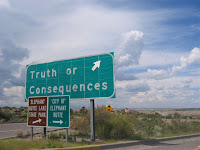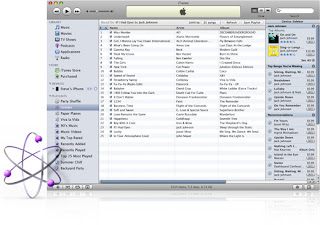I remember reading about an old press baron who insisted on asking editors, “Are there any news?” until finally one replied,
 “No, sir, not a single damned new.”
“No, sir, not a single damned new.”The grammar doesn’t matter much, but it’s important to remember that news indeed is many things, not one.
News is a river, flowing past us in the direction of time, constantly changing. As Native American lore reminds us, “No man can step into the same river twice.”
News is likewise a process, a complex set of relationships between events and personalities that makes better sense when understood in context. What happened before? What is happening elsewhere at the same time? What are the related effects? What will happen over there if this happens here? Why?
Furthermore, what once was the pronouncement of news has become a conversation about it. Discussions of what events mean or what issues are legitimate are no long subsidiary to the process of determining news; they are an integral part of it.
In my salad days journalists relied on one tool to handle it all – the constantly changing river of news as well as the intricate web of process and relationships. Our tool was the story, a finite prose narrative anchored to one spot in time – all the news we could gather and report by midnight, more or less. Compared to the alternatives of the day, it was a rich and powerful source of information.
Compared to the alternatives today, it’s not.
While narrative prose will always play a central role in human communication, the future of public service journalism does not reside with “the story.” Serving news audiences today demands the ability to deliver information that is, as Matt Thompson says, “both timelier and more timeless.”
Jeff Jarvis is postulating that the new “building block of journalism” is the topic, meaning a blog or site “that treats a topic as an ongoing and cumulative process of learning, digging, correcting, asking, answering.” That seems sufficiently broad to embrace much of what we need to be doing. Matt is taking a deeper and more nuanced view of the same questions and comes to some well-supported, sweeping conclusions. Like this:
“I think we’re on the verge of an epochal advancement in journalism. We’ve spoken for years about the radical evolution that must take place, but I think our ideas are only now matching our ambitions. In recent years, our craft has gotten quicker and glitzier and slightly more in touch, but all our progress has been incremental. Now, the paradigm shift is finally at hand ...”
In a popular book in 2000, Malcolm Gladwell introduced us to the notion of the “tipping point” – which he described as “the level at which the momentum for change becomes unstoppable” – and that’s where I see the metamorphosis of news and journalism today.
To be honest, the basic direction of news in a digital, networked world has been apparent for more than a decade, but until recently its unstoppable momentum wasn’t obvious enough to command attention.
After the graphical browser appeared and opened the world wide web to a global audience in the mid-1990s, many predicated its inevitable
 ascendancy. But in March 2000 the “dot com bubble” burst in a spectacular display of business failure, allowing many old-school journalism decision makers to breath a sign of relief and exhale a string of I-told-you-sos. As a result, the steady Darwinian progress of online companies continued somewhat under the radar while traditional media companies not only survived, but prospered. Newspapers, for example, showed year-over-year revenue growth well into 2006 and operated at elevated profit margins well beyond that.
ascendancy. But in March 2000 the “dot com bubble” burst in a spectacular display of business failure, allowing many old-school journalism decision makers to breath a sign of relief and exhale a string of I-told-you-sos. As a result, the steady Darwinian progress of online companies continued somewhat under the radar while traditional media companies not only survived, but prospered. Newspapers, for example, showed year-over-year revenue growth well into 2006 and operated at elevated profit margins well beyond that.Unsurprisingly, that all conspired to lull traditional news organizations into more complacency than now seems healthy. (To be fair, there was less the big organizations could have done than today’s critics acknowledge, but little good will come from rehashing those tired arguments). Today this sea change in audience and delivery tools is coupled with an epochal economic meltdown, and the result is an environment traditional news organizations will find painful in the best case.
So be it. The need for honest public service journalism – the kind that speaks the truth to power, puts tools in the hands of citizens, builds community – is more urgent than ever. As the events accelerate, our need for reliable, independent information grows. When your competitor has access to deep information resources, you need even more. Databases, open archival records, real-time reporting, deeply grounded analysis, and unfettered debate will combine to deliver a richer experience than any single story or disembodied report. Platforms (mobile, web-based, e-ink) and media (text, video, voice) will matter only as options for the audience to sort out.
Kevin Kelly’s brilliant New Rules for the New Economy outlined in 1998 how an economy based on bits rather than atoms – on abundance, not scarcity – would change the rules. Now he’s boiled it down either further: Where Attention Flows, Money Follows.
Luckily for us, many of the ways in which you can keep attention flowing are right up our alley. We can explore more about that soon.











